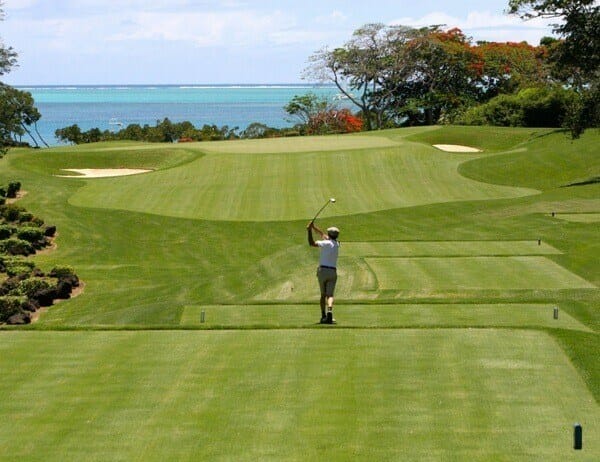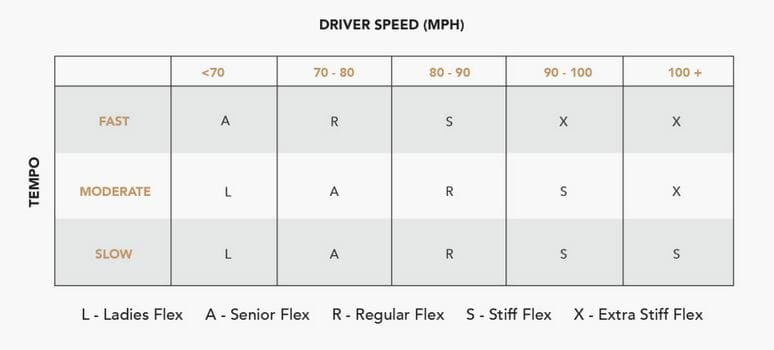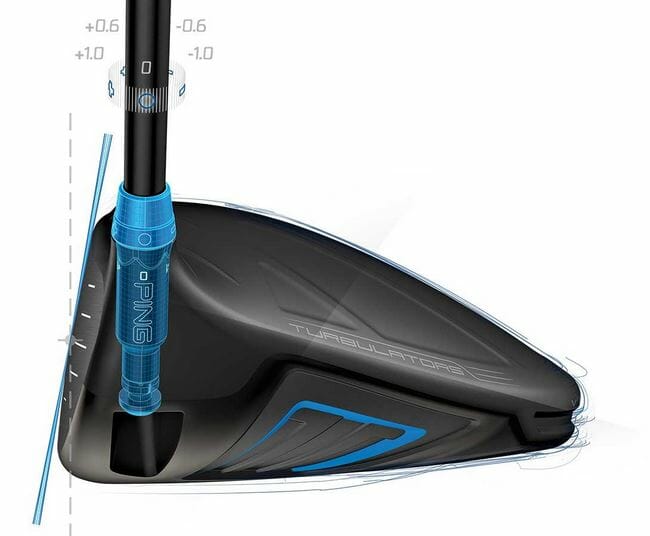Junior Golf Club Fitting

This article will provide information on how junior golf club fitting can help the junior golfer. For information and recommendations on some good clubs for juniors refer to these articles:
- Best junior golf drivers.
- Best junior golf irons for juniors transitioning from kids clubs to adult clubs (e.g. age 11 and up).
- U.S.Kids Tour Series 3 review. These are our favorite clubs for juniors from 5 years old and up.
- Best toddler golf clubs. These are for very young kids just starting golf, from 1.5 years old and up.
When considering what golf clubs to buy for junior golfers we generally look at two primary age groups of juniors that will determine if they are more suitable for "off the shelf" junior or kids clubs or if they should consider getting professional junior golf club fitting (essentially fitted "adult" clubs with junior friendly shafts).
This article is intended to provide information for juniors playing at intermediate to advanced levels and are currently competing or looking to compete in junior tournaments. That said, the same principles can be applied to selecting clubs for juniors who are not doing a professional fitting.
The two primary age groups are:
- Junior golfers, approx. 6-10 years old, with driver swing speeds of less than ~90 mph.
- Junior golfers approx. 10 to 14 years old with driver swing speeds of ~80 to 100 mph that could benefit from adult club technology but still need lighter weight and more flexible clubs than standard adult clubs. This is a transitional age between kids clubs and full size adult clubs.
In this article we will focus primarily on the second age group and the junior golf club fitting considerations that need to be understood and applied.
For juniors in the first age group (younger juniors), we highly recommend U.S.Kids and Flynn Golf (VT Max) clubs. Refer to these posts: Junior Golf Driver Reviews and Fitting and USKids TS3 (Tour Series 3) Review for more information on both U.S.Kids and Flynn Golf including reviews of the various product lines and what makes each a great option for younger juniors golfers.
If you are looking for irons for juniors that are transitioning from kids clubs (e.g. US Kids or Flynn Golf) to adult irons, read this post: "Best Golf Clubs for Juniors Transitioning to Adult Irons".

U.S.Kids Golf Tour Series Iron Set
A good junior golf club fitting will ensure that that your junior's golf equipment matches and supports their swing. As a junior golfer gets older and stronger and hits growth spurts it is important to have a professional club fitting in order to help them realize their potential.
The most important aspects of junior golf club fitting are - lie angle, shaft weight, shaft flex and length. The lie angle is the angle that the club sits on the ground. As kids get older the weight of the shaft is key and can be a big factor in being consistently accurate. Some shafts are designed to keep ball flight down and others keep the ball up in the air. They can be the same weight. As juniors get stronger, the shaft needs to get stiffer, generally speaking, to accommodate higher swing speed and retain accuracy.
Usually around 10-12 years old or when they are ready for US Kids size 60-63 clubs, a professional junior golf club fitting can make a big difference for your child. A lot of the time, around this age, a junior is strong enough to move into a major brand. Major brands generally provide greater consistency and a better "feel". Below is an example of the Ping i200 and Ping i irons that we see a fair amount of juniors using in tournaments and are a good transition set of irons when moving from kids to adults golf clubs.

For more on fitting options, a detailed explanation of what factors go into fitting a driver for junior golfers refer to this article: Best Junior Golf Drivers.
Technical Club Fitting Considerations For Junior Golfers
The following are the most important factors to be considered in junior golf club fitting:
Junior Golf Club Fitting Overview
Many variables affect the performance of a club including shaft weight, club head weight, shaft length, total club balance and weight (including shaft, club head and grip), shaft flex, shaft kick point (flex point) etc. This can be extremely technical and very confusing but don’t worry, we’re going to boil it down to the most important factors in fitting junior clubs.
Club fitting is as much an art as a science. This is because there are so many factors that inter-relate to each other as well as to the individualism of each players swing. Below are reliable “rules of thumb” that we can use to simplify the process. Professional club fitting for juniors is recommended once their driver club head speeds start reaching the mid 90 mph range.
Club Head Weight
- Junior can benefit from clubs that are lighter than standard adult clubs. This is especially important with drivers. A lighter weight head can make it easier for your junior to keep the club on a good swing plane thus helping with desired club head position at impact and more center face strikes. For younger juniors, a driver club head that is lighter than a regular adult driver will promote increased club head speed.
Shaft Length
- Shaft length will be determined primarily by the junior's height. In general a longer shaft will generate more club head speed but may also lead to more off-center strikes (i.e. not struck in the club head sweet spot) and may also negatively impact the swing plane (a longer club generally leads to a flatter swing plane).
- If in doubt always go for a shorter shaft than a longer one. It will help with center face strikes, swing plane and tempo. Despite a shorter shaft this can often lead to higher ball speed and carry distance. A number of PGA Tour pros opt for shorter shafts including Cam Smith (read why it helped Cam), Brooks Koepka, Jimmy Walker, Rickie Fowler and many others.
- Junior Golf Driver - Height to Shaft Length Guide:

- U.S.Kids has done extensive research and their fitting guide chart is a great tool even if your junior has grown out of the U.S.Kids Tour Series clubs:
Shaft Weight
- In general, the heavier the total club weight the more difficult it will be for juniors to get the ball in the air. A graphite shaft should be used where possible to keep the shaft weight down. Most good junior irons and drivers will come with a lighter weight graphite shaft.

Shaft Flex & Flex Point
- Optimal shaft flex is dependent on both swing speed and tempo.
- A slower swing speed benefits from a more flexible shaft. A lightweight junior, senior or ladies flex shaft is often a good option for juniors with driver swing speeds of less than approx. 85 mph.
- A slower tempo also benefits from a more flexible shaft whereas a faster tempo can benefit from a stiffer shaft.
- The folks at True Temper shafts have provided some very useful general guidelines for driver swing speed and tempo in the chart below.

True Temper Swing Speed and Tempo to Shaft Flex Chart
- Shaft flex point / kick point is the part of the shaft that bends the most in the downswing and at impact. A shaft with a low kick point bends near the head of the club, resulting in a higher ball flight and is better for slower swing speeds. Some fitters like to "soft step" shafts for juniors to provide a little more flex at a lower kick point.
Club Balance
- The club balance point that is the equilibrium point of the finished club (including the head, shaft and grip). The balance point impacts the swing weight - i.e. how the club “feels” when swung. This is relevant to junior clubs as you don’t want a heavy club head and light shaft and grip which is what happens if an adult driver is simply cut down – not a good idea.
Grip Size & Weight
- Make sure the grip is a junior size or undersized grip. Once junior’s hands are large enough to use a men’s regular golf glove or ladies large golf glove they can transition into a standard size grip.
Club Loft
- Loft is the angle of the club face relative to the ground, that controls trajectory and affects distance. A general rule of thumb is the younger the junior the more loft they should have on their driver. Also make sure that the irons are a true loft and not de-lofted for more distance as this will impact a junior's ability to get the call in the air. Club makers sometimes de-loft clubs (e.g. wedges) to give more distance. A good club fitter will check the loft of each club to ensure a consistent gap between each.
Driver Lofts
- A general rule of thumb is the younger the junior the more loft they should have on their driver. As swing speeds get higher juniors can transition into lower loft drivers.
- For example, juniors under 4 feet (48 inches) should use a driver with more loft (e.g. 20 degrees). As their swing speed increases, juniors from 4 feet to 5+ feet tall, will transition into drivers with less loft – e.g. starting with 18 degrees and move up to 12 degrees or less.
- Adjustable lofts can be very convenient as a junior's swing speed increases and their swing changes. Adjustable lofts, however, do usually result in a slightly heavier club and can also lead to open or shut faces.
Lie angle
- This is the angle between the golf club shaft and the ground line. The most important thing about measuring lie angle for each particular golfer is how the club is interacting with the ground at impact. The length of the club will impact lie angle so a good fitter will first make sure to have the right length shafts and then fit for the right lie. In some cases they will need to manually "bend" the club head attachment to get the right lie.
- If the lie angle is too small the heel of the club will impact the ground rather than the sole and if the lie angle is too large the toe of the club will impact the ground instead of the sole. In either case this makes it extremely difficult for a junior to consistently make solid contact and a small lie angle will tend to result in a shot left of target while a too large lie angle will generally result in a shot to the right of the target.

In Summary
Younger juniors (swing speeds of less than approx. 80 mph and ages approx. 5 to 10 years old): The U.S.Kids or VT Max (Flynn Golf) clubs are specifically made for these juniors and we highly recommend them.
Juniors that are "in between" kids and adult clubs (swing speeds of approx. 80 to 90 mph and ages 10 to 12): Junior golf club fitting starts to become more important in this age group but not essential, especially at the younger end. The U.S.Kids Tour Series are still a great option up to 11 or 12 years old. However, we do see many of the juniors this age that are playing regional or national tournaments starting to move into fitted "adult" clubs at around age 10. Note that certain makes such as Ping are a great first option as they are slightly lighter weight.
Older juniors - swing speeds 90 mph and above: For advanced golfers in this group (generally ages 12 and up), properly fitted adult clubs are generally the best option. For juniors playing intermediate to advanced level tournament play, professional club fitting is highly recommended.




